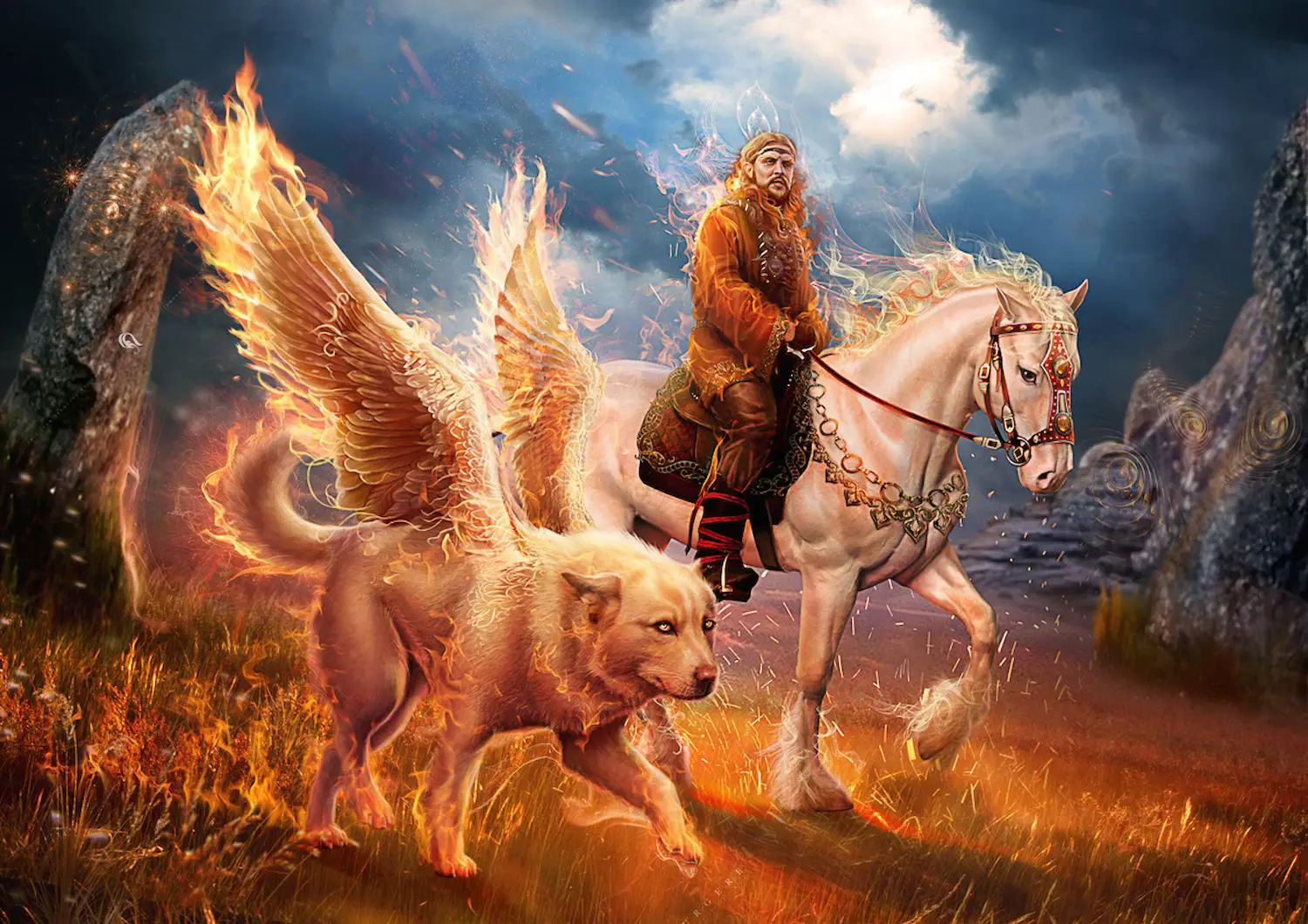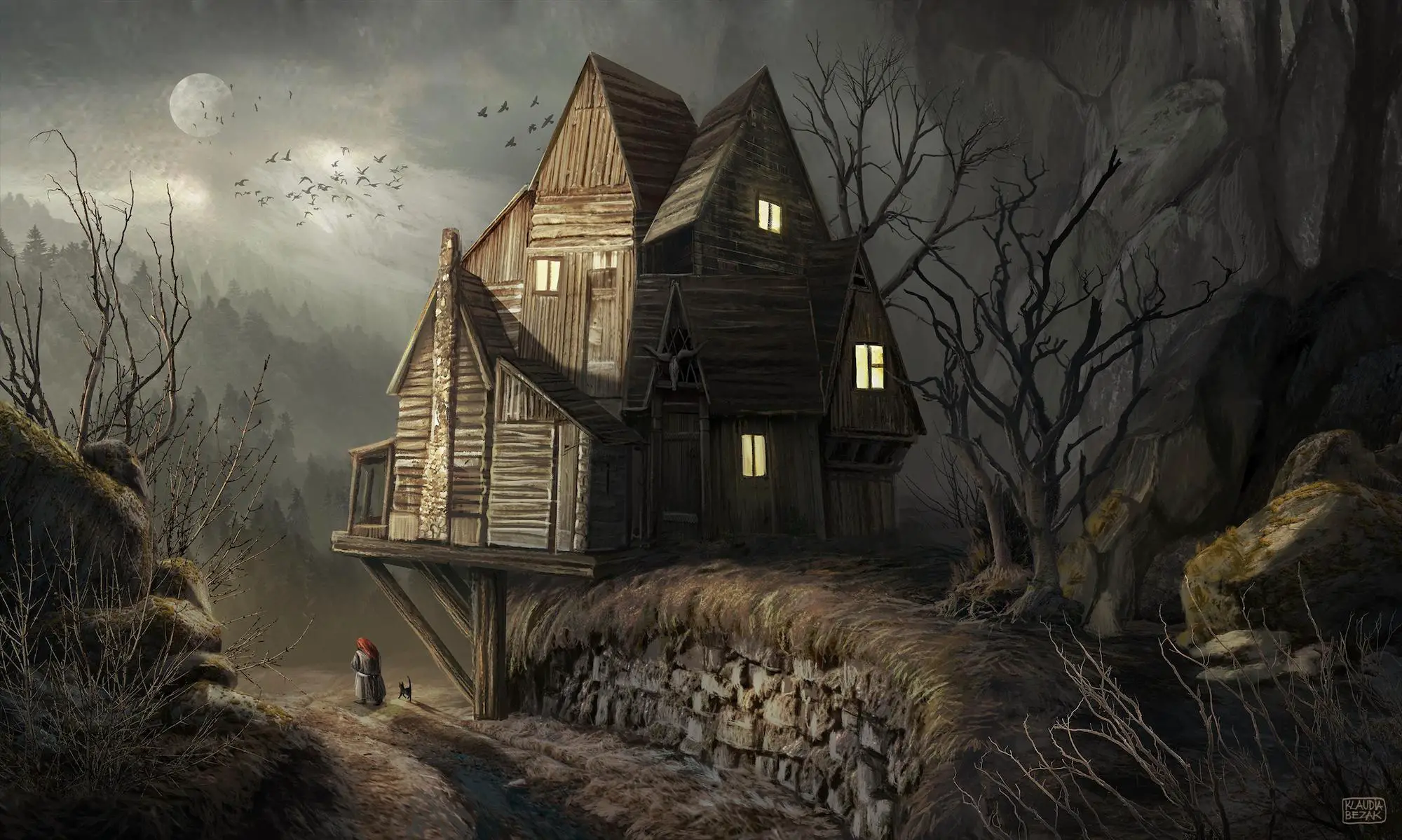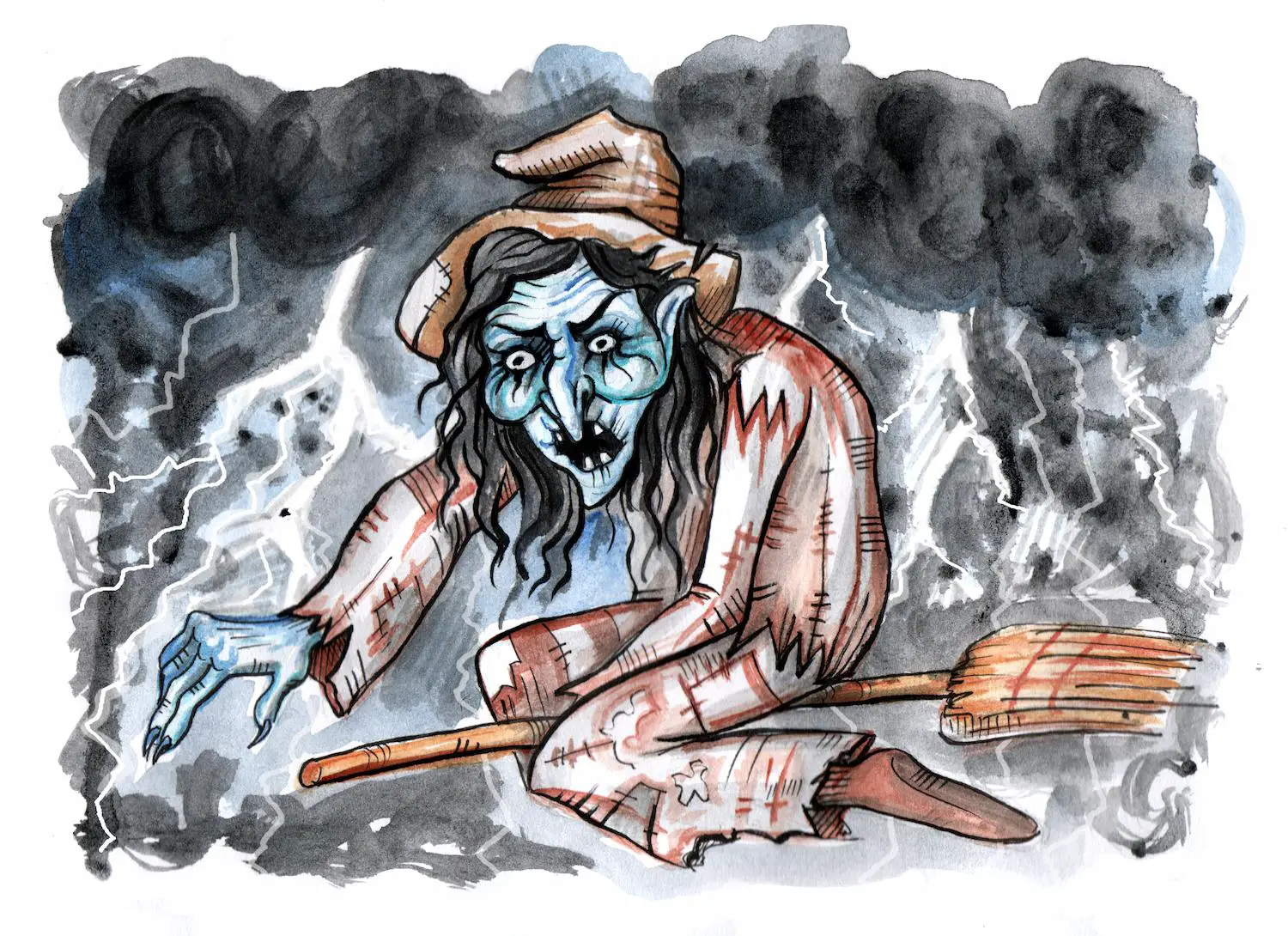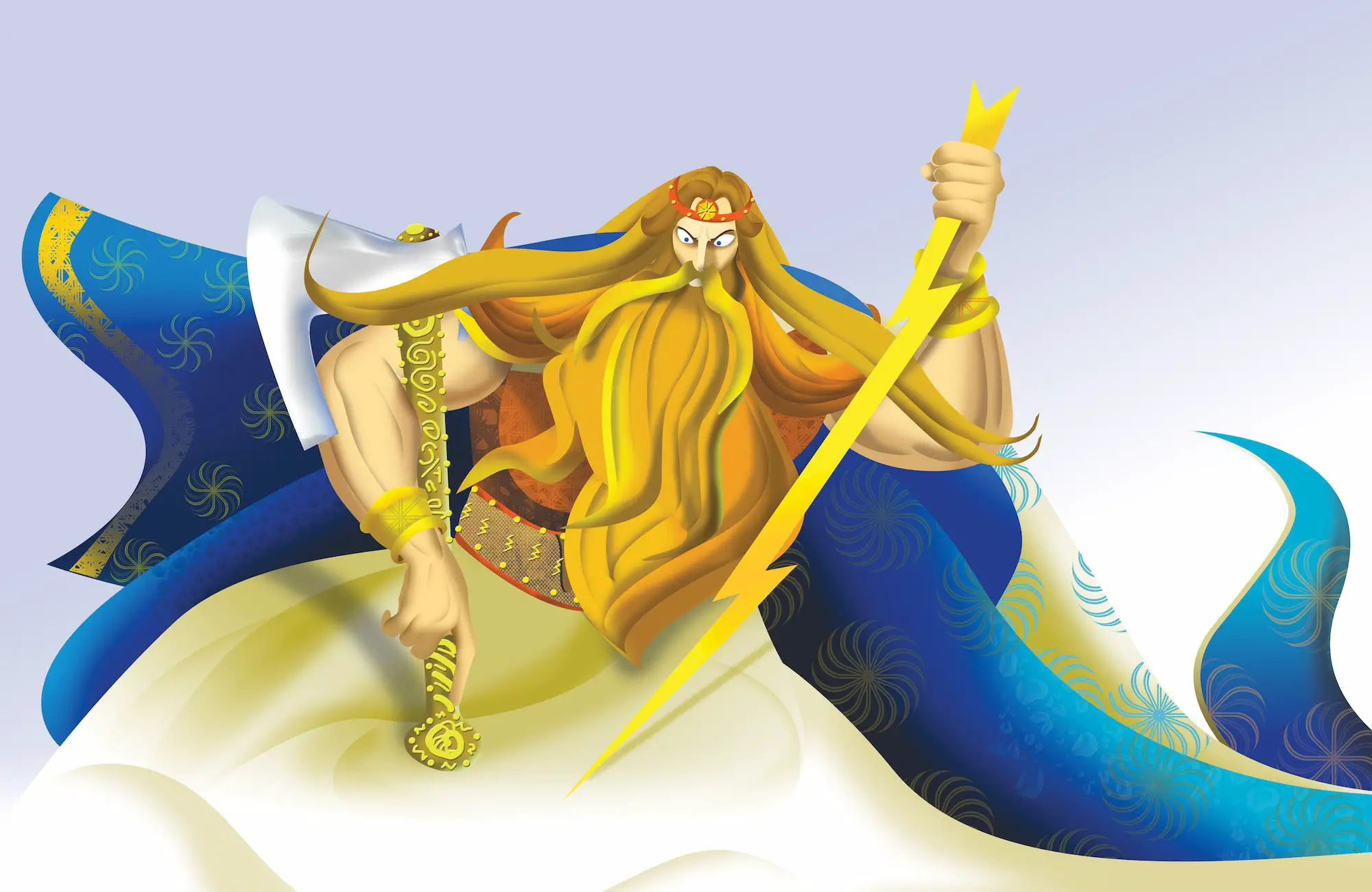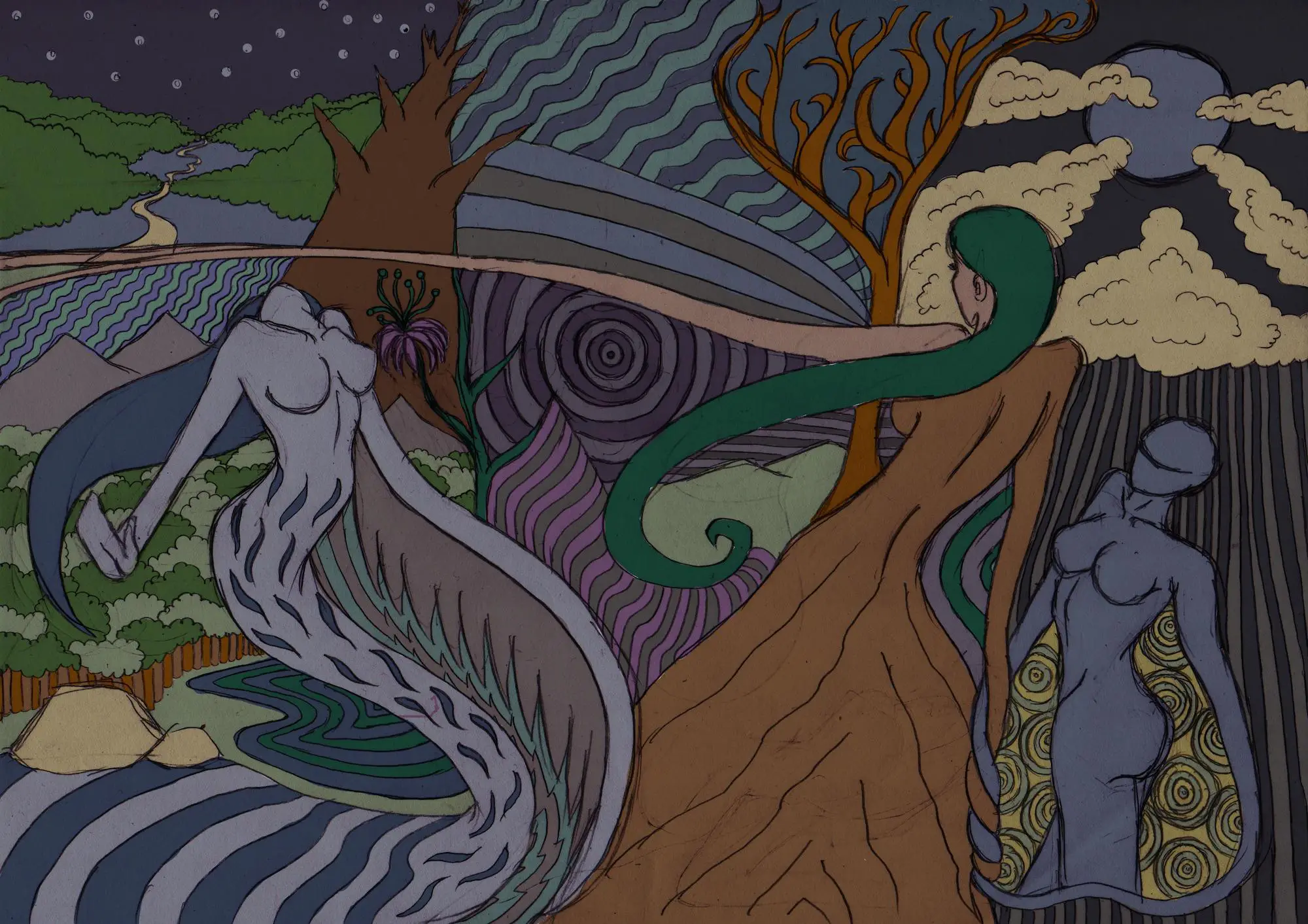In Slavic mythology, the goddess Lada is considered the counterpart of the Scandinavian goddess Freyja and the Greek goddess Aphrodite, both divine representations of beauty, spring and rebirth (end of winter).
In some Slavic myths, she is mentioned as the mother goddess and a supreme female deity of human eroticisms and desire. In other myths, Lada is paired with Lado (who is her male twin).
Lada and Lado were seen as divine twins (although some versions present them as a mother and son). Their unity can also be interpreted in the character of a multi-faced deity (associated with the Sun, water and grain).
Historians and folklorists have extensively debated over the character of Lada in Slavic mythology.
Some scholars claim that the myth of Lada did not exist in pre-Christian times, but that it was invented by anti-pagan clerics in the 15th and 16th centuries who took examples from the Greek, Egyptian or Byzantine myths and in an attempt to alter the cultural aspects of the Slavic religion.
On the other hand, it is said that after the imposed Christianization in Kyivan Rus, the worship of Lada was transferred to the Virgin Mary.
Table of Contents
Goddess Lada: Appearance and Reputation
Reportedly, the first historical records that mention Lada are from the 15th and the 16th century. There, she is presented as the vernal goddess of love and fertility, a patroness of lovers, spouses, contracting marriages and couples but also a guardian of women, children and fruitful harvests.
Lada is illustrated as a voluptuous woman with wavy golden hair, white skin and attractive curves that express maturity and motherhood.
She is considered to be an embodiment of divine beauty and eternal youth. Some Russian folk songs and tales describe her as a gracious beautiful woman with golden hair and a crown on her head.
Lada in Mythology
Folklorists and scholars always examine the character of Lada together with her twin brother (or son) Lado.
In the Slavic, Latvian and Lithuanian mythology she is the goddess of beauty who along with Lado forms a deity of fertility (most similar to the Greek god Dionysus).
Other names in mythology given to Lada are Kupalo/ Kupala (water-related) or Kostromo/ Kostroma (grain-related) or Larilo/Larila (Sun-related). All of them contain masculine and feminine elements.
Lada represents the female component and Lado is her male counterpart.
Folk songs that were sung during harvesting, on the 21st of March (the first spring day) or at wedding ceremonies were sung in honor of this divine duo.
Theories of the Origin of Goddess Lada
There are different theories regarding the origin of Lada, the Slavic goddess.
According to the historian Linda J. Ivantis, goddess Lada was born in the ancient Neolithic times and was a part of the hunting culture.
In addition, it is thought that Lada is a form of the Finno-Slavic goddess Mokosh, or the Great Mother Goddess of Latvians and Mordvins.
Other theories identify Lada with Loduna, the Scandinavian goddess of fire and herds.
Lada (Slavic goddess of beauty) is also compared to other Slavic goddesses, such as Vesna and Devana.
In some Polish interpretations, Lada is honored as the goddess of spring or “dodola goddess”. She is also associated with the twin deities Zizilia and Didilia who are the protectors of love and fertility.
Theories of the Lado-Lada Union
According to Slavic mythology, the “Lado-Lada” multi-deity is also seen as a contrastive duality where Lada is the goddess of spring or fertility, while Lado is the deity of the underworld and marriage.
The “Oxford Companion to World Mythology” describes this Slavic goddess as a deity that dies and rises in an indefinite cycle [1].
By the 18th century, Lada assumed the role of a fertility goddess (and mother goddess) with Lado being her companion or offspring as certain versions suggest.
Naming and Etymology
Reportedly, the names of Lada and Lado derive from the Russian word “lad” or “ladit” which means “harmony” or “creating harmony with someone”.
Folklorists agree that the role of young women at the time was to kindly welcome the “rusalki” in the springtime, who would bring fertility and harmony to nature.
Short Historical Overview
The first confirmed historical records that mention this Slavic goddess of spring are the Russian monastic texts from the 15th to 18th century. These texts mention the worship of a goddess named Lada and a phallic god Lado.
The worship of these deities was performed during the spring when the water spirits (known as “rusalki“) would be welcomed. The Polish chronicler Jan Dlugosz mentioned Lada in the Kievan Synopsis in the early 17th century.
Lada in the Kievan Synopsis
The Kievan Synopsis was initially published in 1674. It is a collection of texts that interpret history through the Christian conception of time. The synopsis is focused on the Christian narratives of creation, fall and redemption.
In this work, Lada is mentioned as a fertility goddess that was an important part of the culture from the time when the ruler Volodymyr the Great took the throne [2].
The 18th Century Tale of Lada
Lada was a character in one of the tales written by an eminent Russian novelist Michail Chulkov. The name of this 18th-century work is “Slavenskie skazki” or “Tales of Desire and Discontent”.
In the story, the hero Siloslav is on a quest to save his beloved Prelepa who was taken by an evil spirit. He finds her at a dwelling place amidst a wetland as she lies naked in a seashell filled with foam (just like the mythic goddess of love was portrayed).
Prelepa tells him that she is now the ruler of a kingdom where only women live, offering endless sexual satisfaction. She invites Sinoslav to join her and never leave.
Siloslav enters the kingdom and is soon lured by the goddess Lada who chooses him to be her lover. Siloslav discovers that the kingdom is deprived of men because Prelepa committed adultery with the evil spirit Vlegon and thus caused the death of all men in the kingdom.
Sinoslav rejects her suggestion and decides to fight Vlegon in order to resurrect the men. Soon, he realizes that he was tricked and that Prelepa’s spirit was cast away when Vlegon disguised himself as her. He also finds out that Lada was actually a witch disguised as the goddess.
Slavic Goddess Lada: Myth of Myth of a Myth?
In 2019, the historians Judith Kalik and Alexander Uchitel published the book “Slavic Gods and Heroes” where they lay out the theory that Lada is one of the so-called “phantom gods” that were added in the Slavic pantheon by anti-pagan clerics in the medieval and late modern period.
These scholars argue that her name actually stems from a nonsensical refrain found in Slavic folk songs – “lado, lada!” which was patched into a duo of gods [3].
Several years before this theory was published, the Lithuanian historian Balsys also brought out the question of the authenticity of this goddess.
According to Balsys, there are specific records in history (from the Baltic states), that note the existence of a winter goddess Lada and rituals related to her worship during the “ledu dienos” which can be translated as “days of ice and hail”.
Sources
- https://www.oxfordreference.com/view/10.1093/acref/9780195156690.001.0001/acref-9780195156690
- https://www.britannica.com/biography/Vladimir-I
- https://www.routledge.com/Slavic-Gods-and-Heroes/Kalik-Uchitel/p/book/9780367588649








